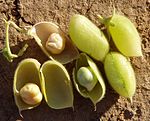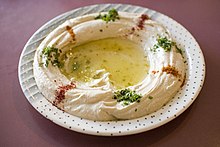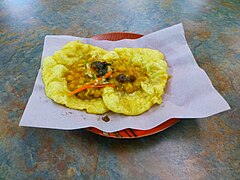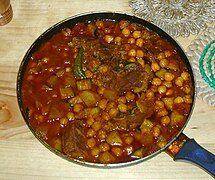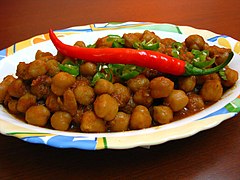chana dal may be a panacea for diabetes

chana dal
Introduction
Chana dal may be a panacea for diabetes (Benefits of eating chana dal on diabetes): The chana dal. The chickpea or chickpea (Cicer arietinum) is an annual legume of the Fabaceae subfamily Faboideae. Its different sorts are called gram or Bengal gram, garbanzo or garbanzo bean, or Egyptian pea. Chickpea seeds are excessively protein. It is one of the earliest cultivated legumes, and 9500-year-old antique stays have been located in the Middle East.
Chickpeas are a key component in hummus and chana masala, and they may be ground into flour to make falafel. Likewise, they are utilized in salads, soups and stews, curry, and other meal merchandise like channa. Chickpeas are crucial in Indian, Mediterranean, and Middle Eastern delicacies. In 2019, India became responsible for 70% of world chickpea manufacturing.
Etymology chana dal
The call “chickpea,” earlier “cliche peace,” is modeled on Middle French pois chiche, wherein cliche comes from Latin cicer. “Chich” became utilized in English from the 14th to the 18th centuries. From an alteration of Old Spanish arvanço, the phrase garbanzo got here first to English as “grievance” in the seventeenth century, being regularly anglicized to “calavance,” even though that got here to consult numerous different beans, consisting of the hyacinth bean. The contemporary-day shape of garbanzo comes without delay from contemporary-day Spanish.
History
Cicer reticulatum is the wild progenitor of chickpeas and presently best grows in southeast Turkey, wherein they may be believed to have been domesticated. Domesticated chickpeas had been located at Pre-Pottery Neolithic B (9900–9550 BP) websites in Turkey and the Levant, specifically at Çayönü, Hacilar, and Tell es-Sultan (Jericho). Chickpeas then unfolded to the Mediterranean area around 6000 BC and India around 3000 BC.
In southern France, Mesolithic layers in a cave at L’Abeurador, Hérault, have yielded chickpeas carbon-dated to 6790±ninety BC. They were located inside the overdue Neolithic (approximately 3500 BC) websites at Thessaly, Kastanas, Lerna, and Dimini, Greece.
Chickpeas are stated in Charlemagne’s Capitulare de villas (approximately 800 AD) as cicer italicum, grown in each imperial demesne. Albertus Magnus mentions red, white, and black varieties. Seventeenth-century botanist Nicholas Culpeper stated that “chickpeas or cancers” are much less “windy” than peas and more nourishing. Ancient humans additionally related chickpeas with Venus because they had been stated to provide scientific use along with growing semen and milk manufacturing, inducing menstruation and urination, and assisting in treating kidney stones. “White cancers” had been an incredibly sturdy and helpful idea.

In 1793, a German author started using floor-roasted chickpeas instead of espresso in Europe. Before the First World War, they were grown for this use in a few regions of Germany. Nevertheless, they are occasionally brewed in preference to espresso.
Genome sequencing
Sequencing of the chickpea genome has been finished for ninety chickpea genotypes of numerous wild species.[16] A collaboration of 20 studies organizations, led with the aid of the International Crops Research Institute for the Semi-Arid Tropics (ICRISAT), sequenced CDC Frontier, a Kabuli chickpea range, and diagnosed greater than 28,000 genes and numerous million genetic markers.
Geographic cultivation
This section desires extra citations for verification. Please help enhance this article by including citations from dependable sources. Unsourced cloth can be challenged and removed. (June 2021) (Learn how and while to do away with this template message)
Flowering and fruiting chickpea plant
Chickpea pods
The plant grows to 20–50 cm (eight–20 in) excessively and has small, feathery leaves on both facets of the stem. Chickpeas are a kind of pulse, with one seedpod containing one or three peas. The plant has white flowers with blue, violet, or crimson veins.
Dozens of forms of chickpeas are cultivated all over the globe. In general, American and Iranian chickpeas are sweeter than Indian chickpeas. Kermanshah chickpeas in sizes eight and nine are considered a few of the most excellent within the globe.
Desi chana has tiny, darker seeds and a hard coat. They are broadly spoken in India and different components of the Indian subcontinent, Ethiopia, Mexico, and Iran. Desi means “country” or “native” in Hindi-Urdu; its other names include Kala chana (“black chickpea” in Hindi-Urdu) or cholera boot. Desi chana may be black, inexperienced, or speckled. This range is hulled and cut up to make chana dal.
Garbanzo beans or ‘Kabuli chana are lighter-colored, large, and with a smoother coat, and are specially grown inside the Mediterranean, Southern Europe, Northern Africa, South America, and the Indian subcontinent.[19] The call means “from Kabul” in Hindi-Urdu, and this range became an idea to return from Kabul, Afghanistan, when it was brought to India in the 18th century. An unusual black chickpea, Ceci Neri, is grown best in Apulia and Basilicata in southern Italy. It is equally long as garbanzo beans, each large and darker than the ‘desi’ range.
Source: FAOSTAT of the United Nations
In 2019, the global manufacturing of chickpeas reached 14 million tonnes, led by India, which contributed 70% of the worldwide total, and Turkey, a secondary producer (table).
Uses
This section desires extra citations for verification. Please help enhance this article by including citations to dependable sources. Unsourced cloth can be challenged and removed. (June 2021) (Learn how and while to do away with this template message)
Culinary[edit]
See additionally: List of chickpea dishes
Chana Dal cut up Bengal gram.
Hummus with olive oil
Dhokla steamed chickpea flour snack.
Chickpeas are commonly swiftly boiled for 10 minutes, after which they are simmered for an extended period. Dried chickpeas have a long cooking time (1–2 hours); however, they collapse easily when cooking longer. If soaked for 12–24 hours earlier than use, cooking time may be shortened by using around 30 minutes. Chickpeas can also be strain-cooked or sous-vide cooked at ninety °C (194 °F).
Mature chickpeas may be cooked and eaten bloodless in salads, cooked in stews, floor into flour, base and formed in balls and fried as falafel, made right into a batter and baked to make farinata or cecina, or fried to make paneled. Chickpea flour is called gram flour or besan in South Asia and is often used in South Asian delicacies.
In Portugal, chickpeas are one of the ingredients in ranchos, eaten with pasta and meat or with rice. They are also used in other foods, such as bacalhau, soups, meat stews, salads blended with tuna and veggies, olive oil, vinegar, warm pepper, and salt. In Spain, they may be used bloodless in salads and cocido madrileño.
Hummus is the Arabic phrase for chickpeas, which might be frequently cooked and floor right into a paste and blended with tahini (sesame seed paste), the combo called ḥummuṣ bi ṭaḥīna. Chickpeas are roasted, spiced, and eaten as a snack, along with leblebi. By the quiet of the 20th century, hummus had not been unusual in American delicacies. By 2010, 5% of Americans were fed daily, which became 17% of American households.
Chickpeas and Bengal grams are used to make curries. They are one of the most famous vegetarian ingredients within the Indian subcontinent, and in the diaspora, groups of many different nations are served with bread or steamed rice. Popular dishes in Indian delicacies are made with chickpea flour, Mirchi bajji, and nirmanakaya bajji. Besides the Levant, unripe chickpeas are frequently picked out of the pod and eaten as an uncooked snack, and the leaves are eaten as a leaf vegetable in salads. Cakes, besan halwa, goodies, and Mysore Pak, besan barfi, and laddu are made in India.[citation needed]
Chickpea flour is used to make “Burmese tofu,” which became first recognized by a few of the Shan humans of Burma. In South Asian delicacies, chickpea flour (besan) is used as a batter to coat veggies before deep frying to make pakoras. The flour is likewise utilized as a batter to cover veggies and meats earlier than frying, or fried on my own along with paneled (little bread), a chickpea fritter from Sicily. Chickpea flour makes the Mediterranean flatbread socca called Panisse in Provence, southern France. It is manufactured from cooked chickpea flour, poured into saucers, allowed to set, reduced to strips, and fried in olive. It is frequently eaten for the duration of Lent. In Tuscany, chickpea flour (farina di Ceci) is used to make an oven-baked pancake blended with water, oil, and salt. Chickpea flour, called kadlehittu in Kannada, makes the candy dish Mysore Pak.
In the Philippines, chickpeas preserved in syrup are eaten as goodies and in cakes along with halo-halo. Jews from Ashkenazi nations historically serve whole chickpeas at a Shalom Zachar birthday party for infant boys.
Gu, or garbanzos, Lorenzo is a Mexican chickpea road sAlthoughheless inexperienced, the beans are cooked in water and salt, saved in a steamer to preserve their humidity, and served in a plastic bag.
A chickpea-derived liquid (aquafaba) may be used as an egg substitute native to make meringue or ice cand, with the residual used as flour.
Doubles, a roamealls in Trinidad and Tobago
Manchego delicacies; chickpea and Silene vulgaris stew (potaje de garbanzos y collejas)
Farinata di Ceci, a traditional Italian chickpea snack meals
Chakhchoukha in Algerian delicacies; freshly cookemarqueqa earlier than blending with roughage
Masalamasala, India
Halua chickpeas, Bangladesh
Fried chickpea
Animal feed
Chickpeas function as an electricity and protein supply as animal feed.
Raw chickpeas decade have decreased trypsin inhibitor content compared to not unusual beans and s, soybeans. This results in better vitamin values and less digestive troubles in nonruminants. Nonruminant diets may be finished with two hundred g/kg of uncooked chickpeas to sell egg manufacturing and increase birds and pigs. Higher quantities may be used while chickpeas are handled with warmness.
Experiments have proven that ruminants develop similarly correctly and bring the same quantity and excellent m, ilk, while soybean or cereal food is changed with chickpeas. Pigs display equal overall performance; however, growing pigs enjoy the terrible impact of uncooked chickpea feed; extruded chickpeas can increase overall performance even in developing pigs. The best younger broilers (beginning period) confirmed worse overall performance in rooster eating regimen experiments with untreated chickpeas. Fish accomplished similarly correctly while their soybean or cereal eating regimen became changed with the aid of using extruded chickpeas. Chickpea seeds have additionally been utilized in rabbit diets.
Secondary additives of legumes—along with lecithin, polyphenols, oligosaccharides, amylase, protease, trypsin, and chymotrypsin inhibitors—can cause decreased nutrient availability hence to impaired increase and fitness of animals (especially in nonruminants). Ruminants typically have much less of a problem digesting legumes with secondary additives because they can inactivate the rumen liquor. Their diets may be supplemented with three hundred g/kg or more excellent uncooked chickpea seeds—however, protein digestibility and electricity availability progress through treatments, germination, dehulling, and warmness. Extrusion is a superb warmness method to ruin secondary additives in legumes because proteins are irreversibly denatured. Overprocessing might also lower the dietary value; extrusion results in losses in minerals and vitamins, and even as dry he no longer extrudes the chemical composition.
Nutrition
| Nutritional value per 100 g (3.5 oz) | |
|---|---|
| Energy | 686 kJ (164 kcal) |
|
Carbohydrates
|
27.42 g
|
| Sugars | 4.8 g |
| Dietary fiber | 7.6 g |
|
Fat
|
2.59 g
|
| Saturated | 0.27 g |
| Monounsaturated | 0.58 g |
| Polyunsaturated | 1.16 g |
|
Protein
|
8.86 g
|
| Vitamins | Quantity%DV† |
| Vitamin A Equiv. |
0%
1 μg |
| Thiamine (B1) |
10%
0.12 mg |
| Riboflavin (B2) |
5%
0.06 mg |
| Niacin (B3) |
4%
0.53 mg |
| Pantothenic acid (B5) |
6%
0.29 mg |
| Vitamin B6 |
11%
0.14 mg |
| Folate (B9) |
43%
172 μg |
| Vitamin B12 |
0%
0 μg |
| Vitamin C |
2%
1.3 mg |
| Vitamin E |
2%
0.35 mg |
| Vitamin K |
4%
4 μg |
| Minerals | Quantity%DV† |
| Calcium |
5%
49 mg |
| Iron |
22%
2.89 mg |
| Magnesium |
14%
48 mg |
| Phosphorus |
24%
168 mg |
| Potassium |
6%
291 mg |
| Sodium |
0%
7 mg |
| Zinc |
16%
1.53 mg |
| Other constituents | Quantity |
| Water | 60.21 g |
|
|
| †Percentages are roughly approximated using US recommendations for adults. Source: USDA FoodData Central |
|
| Nutritional value per 100 g (3.5 oz) | |
|---|---|
| Energy | 1,581 kJ (378 kcal) |
|
Carbohydrates
|
62.95 g
|
| Sugars | 10.7 g |
| Dietary fiber | 12.2 g |
|
Fat
|
6.04 g
|
| Saturated | 0.603 |
| Monounsaturated | 1.377 |
| Polyunsaturated | 2.731 |
|
Protein
|
9 g
|
| Vitamins | Quantity%DV† |
| Vitamin A Equiv. |
0%
3 μg |
| Thiamine (B1) |
41%
0.477 mg |
| Riboflavin (B2) |
18%
0.212 mg |
| Niacin (B3) |
10%
1.541 mg |
| Pantothenic acid (B5) |
32%
1.588 mg |
| Vitamin B6 |
41%
0.535 mg |
| Folate (B9) |
139%
557 μg |
| Vitamin B12 |
0%
0 μg |
| Vitamin C |
5%
4 mg |
| Vitamin E |
5%
0.82 mg |
| Vitamin K |
9%
9 μg |
| Minerals | Quantity%DV† |
| Calcium |
6%
57 mg |
| Copper |
33%
0.656 mg |
| Iron |
33%
4.31 mg |
| Magnesium |
22%
79 mg |
| Manganese |
1015%
21.306 mg |
| Phosphorus |
36%
252 mg |
| Potassium |
15%
718 mg |
| Sodium |
2%
24 mg |
| Zinc |
29%
2.76 mg |
| Other constituents | Quantity |
| Water | 60.21 g |
|
|
| †Percentages are roughly approximated using US recommendations for adults. Source: USDA FoodData Central |
|
Chickpeas are a nutrient-dense food, providing rich content (20% or higher of the Daily Value, DV) of protein, dietary fiber, folate, and certain dietary minerals, such as iron and phosphorus, in a 100-gram reference amount (see adjacent nutrition table). Thiamin, vitamin B6, magnesium, and zinc contents are moderate, providing 10–16% of the DV. Compared to reference levels established by the United Nations Food and Agriculture Organization and World Health Organization and germinated chick proteins, peas are rich in essential amino acids such as lysine, isoleucine, tryptophan, and total aromatic amino acids.
A 100-gram (3+1⁄2-ounce) reference serving of cooked chickpeas provides 686 kilojoules (164 kilocalories) of food energy. Cooked chickpeas are 60% water, 27% carbohydrates, 9% protein, and 3% fat (table). 75% of the fat content is unsaturated fatty acids, for which linoleic acid comprises 43% of the total fat.
Effects of cooking
Cooking treatments do not lead to variance in total protein and carbohydrate content. Soaking and cooking of dry seeds possibly induce chemical modification of protein-fiber complexes, which leads to an increase in crude fiber content. Thus, cooking can increase protein quality by inactivating or destroying heat-labile antinutritional factors. Cooking also increases protein digestibility, essential amino acid index, and protein efficiency ratio. Although cooking lowers concentrations of amino acids such as tryptophan, lysine, total aromatic, and sulfur-containing amino acids, their contents are still higher than the FAO/WHO reference proposed. Diffusion of reducing sugars, raffinose, sucrose, and others into cooking water reduces or entirely removes these components. Cooking also significantly reduces fat and content. The B vitamins riboflavin, thiamin, niacin, and pyridoxine dissolve into cooking water at differing rates.
Germination
Germination of chickpeas improves protein digestibility, although at a lower level than cooking. Germination degrades proteins to simple peptides, improving crude protein, nonprotein nitrogen, and natural fiber content. Germination decreases lysine, tryptophan, sulfur, and total aromatic amino acids, but most contents are still higher than proposed by the FAO/WHO reference pattern.
Oligosaccharides, such as stachyose and raffinose, are reduced in higher amounts during germination than during cooking. Minerals and B vitamins are retained more effectively during germination than with cuisine. Phytic acids are decreased significantly, but trypsin inhibitor, tannin, and saponin reduction are less effective than cooking.
Autoclaving, microwave cooking, boiling, and boiling treatment protein digestibiBoiling and microwaving slightly reduce essential amino acid acids compared to autoclaving and germination. Overall, microwave cooking leads to a significantly lower loss of nutrients than autoclaving and boiling.
Finally, all treatments improve protein digestibility, protein efficiency ratio, and essential amino acid index. Microwave cooking seems to be an effective method for preparing chickpeas because it improves nutritional values and lowers cooking time.
Leaves
Young chickpea leaves are consumed as cooked green vegetaThesey in malnourished populations, it can supp, especially in undernourished populations,lement critical dietary nutrients becsometimes finishedchickpeas are finished sometimes, have people lacking micronutrients. Chickpea leaves have a significantly higher mineral content than cabbage or spinach leaves. In natural settings, environmental factors and nutrient availability could influence mineral concentrations. Consumption of chickpea leaves may contribute nutrients to the diet.
Research
Consumption of chickpeas is under preliminary research for the potential to improve nutrition and affect chronic diseases.
Heat and micronutrient cultivation
Agricultural yield for chickpeas is often based on genetic and phenotypic variability, which artificial selection has recently influenced. The uptake of micronutrients such as inorganic phosphorus or nitrogen is vital to the plant development of Cicer arietinum, commonly known as the perennial chick. Pea Heat cultivation and micronutrient coupling are two relatively unknown methods used to increase the yield and size of the chickpea. Recent research has indicated that a combination of heat treatment and the two vital micronutrients, phosphorus and nitrogen, are the most critical components to increasing the overall yield of Cicer arietinum.
Perennial chickpeas are a fundamental source of nutrition in animal feed as they are high-energy and protein sources for livestock. Unlike other food crops, perennial chickpea can changes its nutritional content in response to heat cultivation. Treatichickpeaspea, with a constant heat source, increases its protein content almost threefold. Consequent heat cultivation affects the protein content of the chickpea itself and the ecosystem it supports. Increasing the height and size of chickpea plants involves using micronutrient fertilization with varying doses of inorganic phosphorus and nitrogen.
The level of phosphorus that a chickpea seed is exposed to during its lifecycle has a positive correlation relative to the height of the plant at full maturity. Increasing the levels of inorganic phosphorus at all doses incrementally increases the size of the chickpea plant. Thus, the seasonal changes in phosphorus soil content and periods of drought are known to be a native characteristic of the dry Middle-Eastern region where chickpea is most commonly cultivated, which substantially affects the plant’s growth. Plant yield is also affected by phosphorus nutrition and water supply, resulting in a 12% increase in crop creation.
Nitrogen nutrition is another factor that affects the yield of Cicer arietinum, although the application differs from other perennial crops regarding the levels administered on the plant. High doses of nitrogen inhibit the work of the chickpea plant. Drought stress is a likely factor that inhibits nitrogen uptake and subsequent fixation in the roots of Cicer arietinum. The perennial chickpea’s growth depends on the balance between nitrogen fixation and assimilation, characteristic of many other agricultural plant types. The influence of drought stress, sowing date, and mineral nitrogen supply all affect the yield and size of the plant, with trials showing that Cicer arietinum differed from other plant species in its capacity to assimilate mineral nitrogen supply from the soil during drought stress. Additional minerals and micronutrients make the absorption process of nitrogen and phosphorus more available. Inorganic phosphate ions are generally attracted towards charged minerals such as iron and aluminum oxides.
Additionally, growth and yield are also limited by zinc and boron deficiencies in the soil. Boron-rich soil increased chickpea yield and size, while soil fertilization with zinc seemed to have no apparent effect on the chickpea yield.
Pathogens
Pathogens in chickpeas are the leading cause of yield loss (up to 90%). One example is the fungus Fusarium oxysporum f.sp. Cicrare os is present in most of the significant pulse crop-growing areas, causing regular yield damages between 10 and 15%.
From 1978 until 1995, the worldwide number of pathogens increased from 49 to 172, of which 35 have been recorded in India. These pathogens originate from bacteria, fungi, viruses, mycoplasma, and nematodes, showing a high genotypic variation. The most widely distributed pathogens are Ascochyta rabiei (35 countries), and Fusarium oxysporum f.sp. Ciceros (32 countries), Uromyces ciceros-arising (25 countries), bean leafroll virus (23 countries), and Macrophomina phaseolina (21 countries). Ascochyta disease emergence is favored by wet weather; wind and water splash carry spores to new plants.
The stagnation of yield improvement over the last decades is linked to the susceptibility to pathogens. Research for yield improvement, such as an attempt to increase yield from 0.8 to 2.0 tons per hectare by breeding cold-resistant varieties, is always linked with pathogen-resistance breeding as pathogens such as Ascochyta rabiei and F. o. f.sp. Ciceros flourish in conditions such as temperature. Research started selecting favorable genes for pathogen resistance and other traits through marker-assisted selection. The use of this method is a promising sign for the future to achieve significant yield improvements.
Gallery



